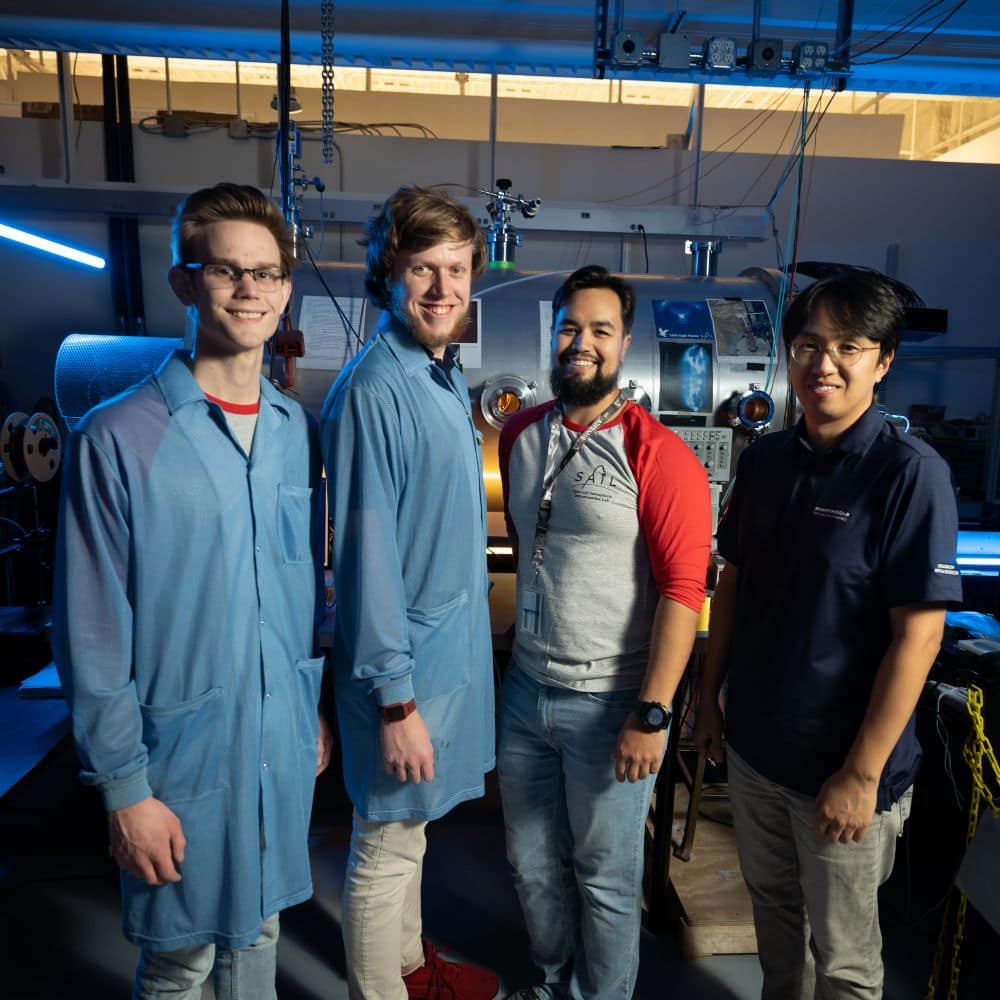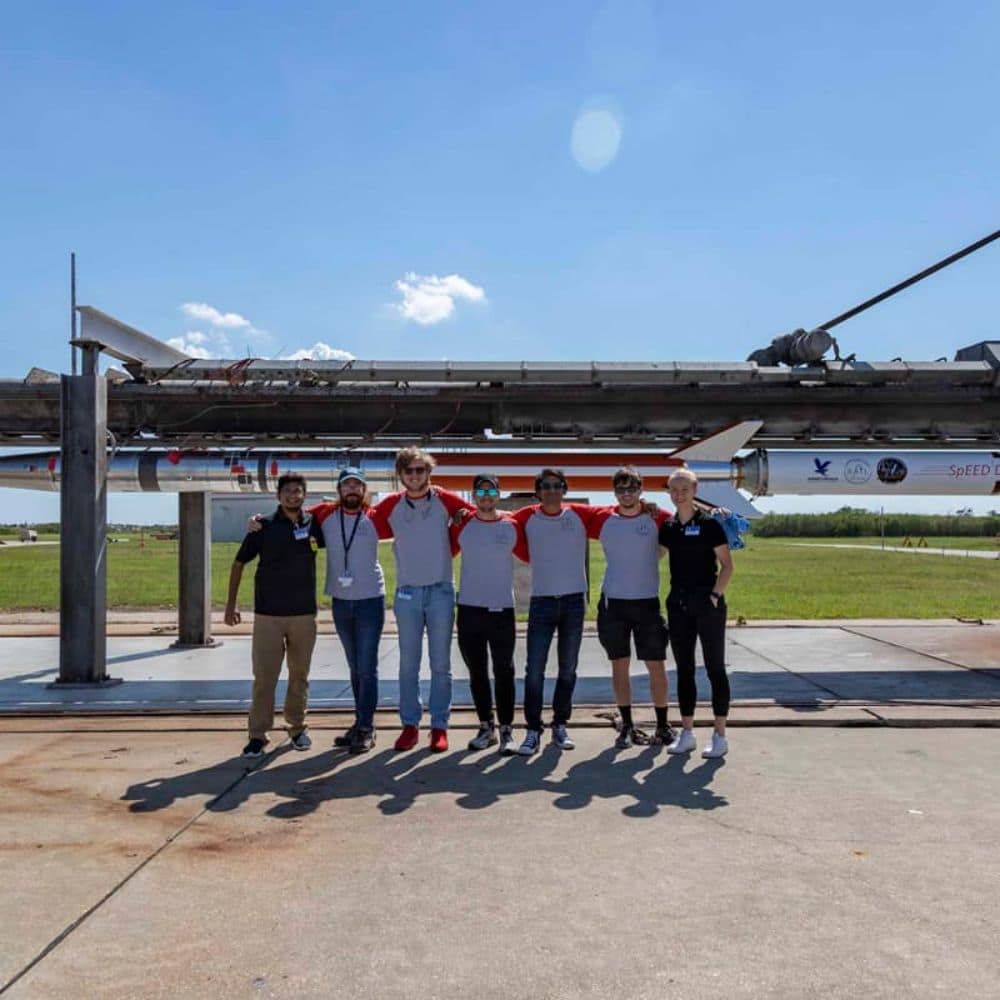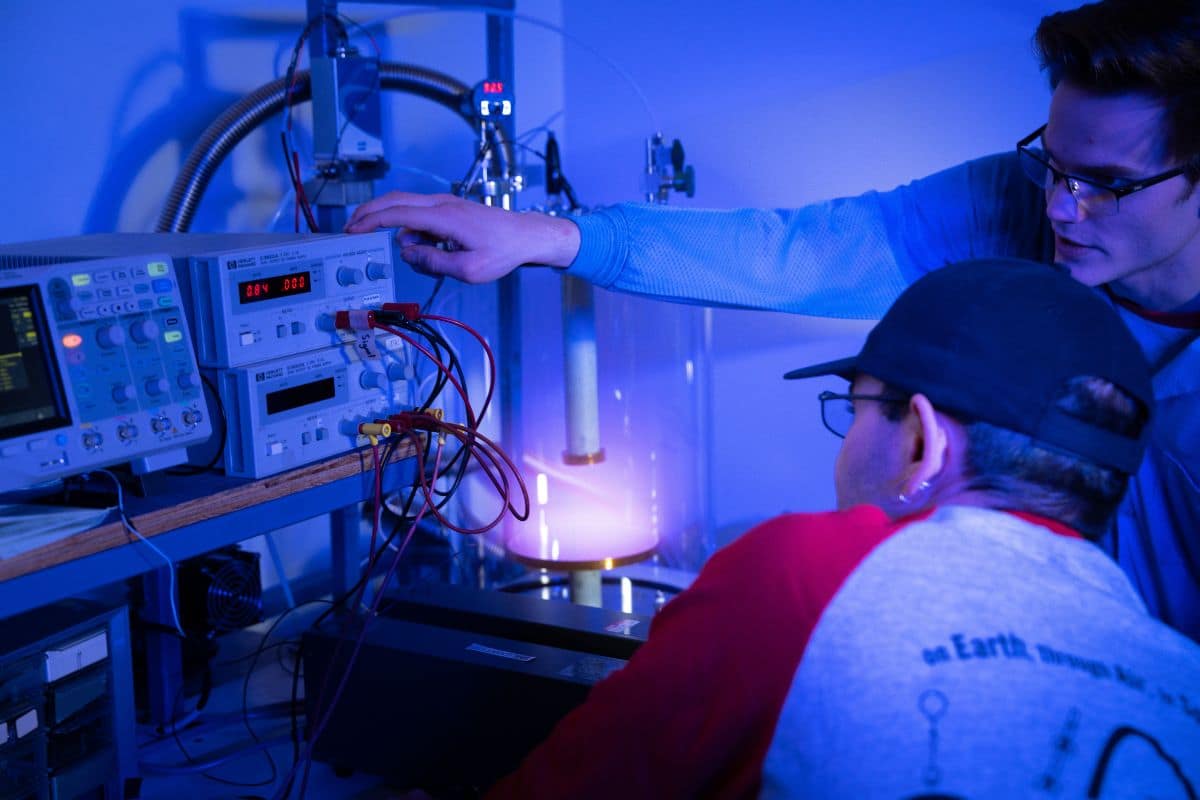

Next Level Labs: Space and Atmospheric Instrumentation Lab (SAIL)

Students Soar Where "the Sky is No Limit"
Whether it’s launching rockets from the world’s northernmost settlement, exploring the potential of fusion as a future power source, or building hardware for satellites that will orbit Mars, SAIL offers opportunities for students to get their hands on the future — literally.
“SAIL is one of the most research rich laboratories on the Embry‑Riddle campus,” said Dr. Aroh Barjatya, professor of Engineering Physics and the lab’s founder and director. “Hard-working, capable and bright students have an opportunity to either join the ongoing research or propose their own.”
What degree programs use SAIL?
SAIL was started in 2007 when Dr. Barjatya arrived at the university, and its mission was to give students pursuing degrees in Engineering Physics, Space Physics, Electrical Engineering, Mechanical Engineering and Aerospace Engineering a place to do hands-on research work and get the practical experience that today’s top flight employers are looking for.
"Dr. Barjatya has built a world-class lab in space and atmospheric research,” said Dr. Peter Hoffmann, dean and professor of Physics at the College of Arts & Sciences. “The most impressive and important feature is how student-driven it is. Students design, build and deploy the hardware around the world to do cutting-edge research. This is a prime example of how Embry‑Riddle and the College of Arts and Sciences provide opportunities for students that would be difficult to find anywhere else."
The lab, located in the College of Arts & Sciences building, has since grown to include two more faculty members, Dr. Jeremy Riousset and Dr. Byonghoon Seo, along with Research Scientists Dr. Robert Clayton and Dr. Shantanab Debchoudhury.
SAIL has a long history of research and engineering milestones that have helped students land rewarding careers with stellar employers that include Google, Lockheed Martin, the Goddard Space Flight Center and MIT’s Lincoln Labs, to name a few.
What do students do in SAIL?
Within just the past two years, SAIL students have been involved in pioneering projects that have included:
- Two recent NASA sounding rocket launches, one in far-north Ny Ålesund, Norway, and another at NASA’s Wallops Flight Facility in Virginia.
- Using a $670,000 federal grant to research technology that could make thermonuclear fusion power generation economically viable.
- Building, calibrating and configuring instruments for CubeSats under an international collaboration with the University of Chile, with the CubeSats launched into Earth orbit by SpaceX last year.
- Developing hardware for the ESCAPADE spacecrafts, which are scheduled to explore the Martian atmosphere in 2026.
The lab’s full suite of equipment and facilities also allows students to pursue research in a variety of ground-based vacuum and plasma chambers, or onboard many different types of high-altitude balloons, suborbital sounding rockets and orbital satellites.
“We have opportunities for doing plasma physics modeling or atmospheric physics modeling, as well as a large dataset from past missions to pursue unanswered science questions related to terrestrial weather and space weather phenomenon,” Dr. Barjatya added.
What opportunities do students get in SAIL?
While on the island of Svalbard, which is about midway between the Norwegian mainland and the North Pole, Dr. Aroh Barjatya and students Nathan Graves and Henry Valentine rested on a small chunk of ice freshly broken off from a glacier while taking a swim in arctic waters. (Photos: NASA/Berit Bland, Aroh Barjatya)
For those students who arrive at Embry‑Riddle within the next two years, the SAIL schedule is already packed with opportunities for research and field work that would not be available to undergraduates at any other school.
“SAIL is pursuing a variety of projects using the plasma chambers: novel plasma sources for fusion and magnetospheric research under Dr. Seo, lightening physics and electric discharges on Earth and throughout the solar system under Dr. Riousset, and novel plasma diagnostics under Dr. Clayton and Dr. Debchoudhury,” Dr. Barjatya said. “We also have 10 upcoming sounding rocket launches in the next 15 months, including rocket launches during the upcoming annular eclipse in October 2023 and total eclipse in April 2024.”
SAIL can also provide seed funding for promising projects proposed and pursued by capable and independent students.
“As long as they convince me that it's worth investing SAIL’s resources, I will,” Dr. Barjatya said.
When it comes to actually working in the lab, SAIL is renowned for a collaborative environment and currently has over a dozen students ranging from sophomores to Ph.D. candidates, and any new students will immediately benefit from working alongside more experienced lab mates willing to share their knowledge and skill.
Whatever role students end up playing in SAIL, Dr. Barjatya expects them to love what they do and be willing to work hard at it. He also expects they will have aptitude to ask the right questions related to a problem, develop actionable plans and have a “can-do and relentless work ethic.”
SAIL is currently funding four Ph.D. students, three master’s students and about a dozen undergraduates, and Dr. Barjatya said there is always room for more.
“This is not a 9 to 5 with weekends off environment,” he said. “There should be that willingness to do whatever it takes because [students] realize that they are doing something so cool and so amazing that it’s not a job but an opportunity to pursue their passions.”






